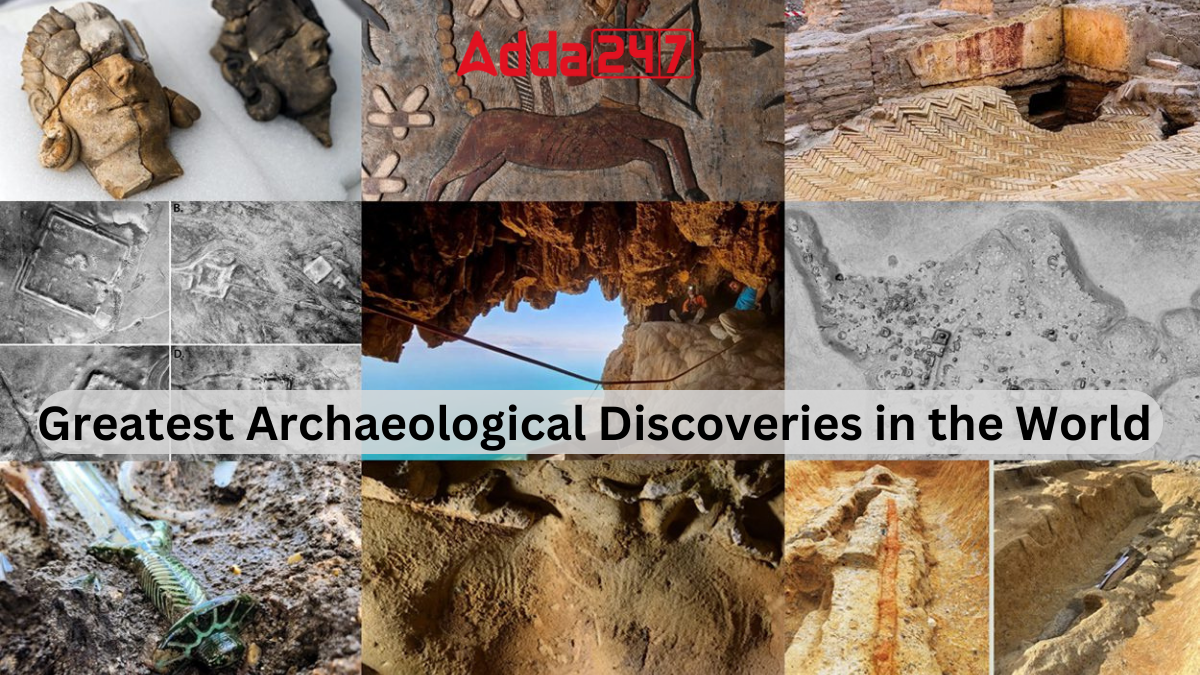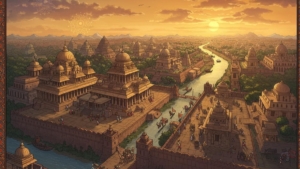Archaeology, the study of human history through the excavation and analysis of material culture, has led to remarkable discoveries that shed light on ancient civilizations, cultures, and traditions. From hidden tombs to lost cities, the world’s archaeological sites have provided invaluable insights into humanity’s past. Here are some of the top archaeological discoveries that have captured the imagination of scholars and enthusiasts worldwide.
Greatest Archaeological Discoveries Ever
Discoveries like Tutankhamun’s tomb, Sutton Hoo’s ship burial, and the Dead Sea Scrolls have reshaped our understanding of history. Olduvai Gorge’s fossils and Altamira Cave’s ancient art offer glimpses into humanity’s past. The Terracotta Army stands as a testament to ancient China’s grandeur, while Pompeii’s preservation captures Roman life. The Library of Ashurbanipal’s tablets and Lucy’s remains illuminate ancient civilizations and human evolution. The Rosetta Stone’s decipherment unlocked the secrets of Egyptian hieroglyphs, marking pivotal moments in archaeology.
List of Top-10 Archaeological Discoveries in the World
Here is the list of top-10 Archaeological discoveries in the world:
| Archaeological Discoveries in the World | |
| S. No. | Archaeological Discoveries |
| 1. | The Rosetta Stone |
| 2. | Lucy |
| 3. | The Library of Ashurbanipal |
| 4. | Pompeii |
| 5. | Dead Sea Scrolls |
| 6. | The Terracotta Army |
| 7. | Cave of Altamira |
| 8. | Olduvai Gorge |
| 9. | Sutton Hoo |
| 10. | Tutankhamun’s Tomb |
The Rosetta Stone
For centuries, deciphering the intricate hieroglyphics of Ancient Egypt posed a formidable challenge to archaeologists. The inscriptions on Egyptian artifacts remained indecipherable without a starting point. However, a pivotal breakthrough occurred with the unearthing of the Rosetta Stone in 1799. This monumental slab featured identical text inscribed in three languages, including Ancient Greek. Leveraging the familiarity of Greek, researchers successfully decoded the hieroglyphs, unveiling the mysteries of Ancient Egyptian writing.
Lucy
Numerous renowned fossils have transformed our understanding of early hominins. Discovered in 1924 in South Africa, the “Tuang Child,” a skull belonging to Australopithecus africanus, was initially hailed as the “missing link” between apes and humans. Despite initial skepticism regarding African human evolution, this find challenged prevailing beliefs. Surpassing the Tuang Child in significance is Lucy, the 3.2 million years-old Australopithecus afarensis specimen unearthed in Ethiopia in 1974. Named after the Beatles’ song “Lucy in the Sky with Diamonds,” her remarkably complete remains provided crucial insights into bipedalism and brain development. Another groundbreaking discovery in Ethiopia in 1994 was Ardi, the 4.4 million-years-old Ardipithecus ramidus skeleton, representing the most comprehensive early hominid specimen ever found.
The Library of Ashurbanipal
Renowned author H. G. Wells once praised the Library of Ashurbanipal as the “most invaluable historical source globally,” a sentiment not far from truth. Discovered by English historian Austen Henry Layard in 1849 within a palace’s ruins, the library held over 30,000 clay tablets containing extensive information on ancient Middle Eastern civilizations. Dating back to the 7th century BCE, these tablets unveiled insights into various aspects of ancient life. Among its treasures, the library housed the Epic of Gilgamesh, widely recognized as humanity’s oldest literary masterpiece.
Pompeii
Pompeii, among the world’s most renowned ruins, met its demise in 79 AD due to the catastrophic eruption of Mount Vesuvius. Buried under volcanic ash, the village remained forgotten until the 16th century, over 1500 years later. Remarkably preserved, Pompeii’s excavation unveiled frozen figures, capturing moments of tragedy and offering poignant glimpses into ancient life. Today, it stands as a popular Italian tourist destination and an invaluable source of Roman history, providing profound insights into ancient civilization.
Dead Sea Scrolls
Primarily written in Hebrew, the Dead Sea Scrolls represent some of the oldest religious texts of the Abrahamic tradition. Discovered in caves in the West Bank during the mid-1940s, additional scrolls have been unearthed in subsequent decades. These artifacts hold immense significance, enabling scholars to gain deeper insights into the Bible’s evolution and shedding light on the early history of Christianity and Judaism. The scrolls continue to be invaluable resources, offering invaluable lessons about ancient religious practices and the Holy Land.
The Terracotta Amry
One of history’s most remarkable archaeological discoveries, the Terracotta Army, was stumbled upon by farmers in China’s Shaanxi province during the 1970s, entirely by chance. Guarding the tomb of Qin Shi Huang, China’s First Emperor, the army comprises over 8000 clay soldiers, meticulously crafted over 2200 years ago. The necropolis, covering nearly 40 square miles, remains largely unexplored, adding to the awe and mystery surrounding this extraordinary find.
Cave of Altamira
For those intrigued by early human history, the Cave of Altamira in Spain stands as an unparalleled treasure trove. While several caves, like Lascaux and others in Ardales, offer insights into ancient human culture, Altamira surpasses them all. Discovered in 1868, its prehistoric drawings initially faced skepticism due to their uniqueness in Europe. However, subsequent research validated their antiquity, dating them back approximately 36,000 years. Featuring depictions of local animals, Altamira’s ancient artwork provides invaluable glimpses into early human creativity and expression.
Olduvai Gorge
Situated in the northeastern region of Tanzania, Olduvai Gorge stands as a paramount hub for paleoanthropological studies, delving into the origins and evolution of early humans. This expansive locality boasts a trove of significant artifacts and findings that have immensely enriched our comprehension of human ancestry. Through meticulous excavations, researchers have unearthed ancient stone implements and the fossilized remains of Hominids. The site’s historical footprint spans nearly two million years, with evidence suggesting occupation by Homo habilis, an ancient human species. Olduvai Gorge’s profound archaeological contributions have profoundly deepened our insights into the diverse facets of early human culture and existence, profoundly shaping our understanding of our evolutionary journey.
Sutton Hoo
In 1939, a remarkable archaeological excavation took place on the estate of Edith Pretty in Suffolk, England, leading to one of Europe’s most extraordinary Medieval graves being unearthed. Edith Pretty’s curiosity about the burial mounds on her property prompted her to enlist archaeologists to investigate further. What they uncovered was nothing short of astonishing and later inspired the 2021 film, “The Dig.” Among the mounds, they discovered an intact long ship adorned with numerous artifacts, including pieces of gilded armor and other Anglo-Saxon treasures. Despite being one of the United Kingdom’s most significant archaeological finds, the exact identity of the grave’s occupant remains a mystery. However, many signs point to it potentially being the burial site of Rædwald, a renowned East Anglian King who reigned approximately 1400 years ago.
Tutankhamun’s Tomb
Nestled in the Valley of the Kings, the final resting place of numerous Ancient Egyptian Pharaohs, stands a site steeped in both history and intrigue. Despite the Valley’s unfortunate history of tomb plundering, the discovery of Tutankhamun’s tomb in 1922 marked a distinct departure. Despite an initial breach by grave robbers shortly after its sealing, the tomb remained largely intact, unveiling a treasure trove that captivated the world. Tutankhamun, who reigned for a brief decade and perished in his late teens, achieved unparalleled fame, his gilded mask becoming an iconic symbol of ancient royalty. Within the tomb, alongside the mask, lay a statue venerating Anubis, the deity of the afterlife, and a dagger forged from a meteorite, adding layers of mystique to the young pharaoh’s legacy.




 Top-10 Countries that Drink Most Coffee ...
Top-10 Countries that Drink Most Coffee ...
 Which is the Largest Mangrove Forest in ...
Which is the Largest Mangrove Forest in ...
 Do You Know What is the Old Name of Patn...
Do You Know What is the Old Name of Patn...

